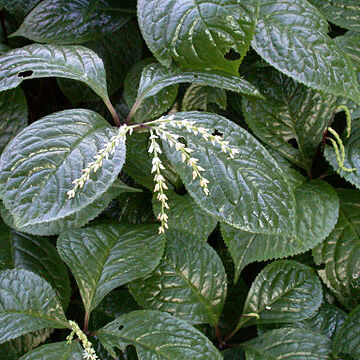Subshrubs or perennial herbs. Leaves opposite or whorled, serrate; stipules tiny; petioles connected by a transverse ridge on stem. Inflorescences in spikes or branched, arranged in panicles, terminal or axillary. Flowers small, bisexual; perianth absent. Stamens usually 3, rarely 1, on 1 side of apical part of ovary; basal part of connective confluent, or free and connected or overlapped at base, ovoid or lanceolate, sometimes elongated to linear; anthers 1-or 2-loculed; if stamens 3, central anther 2-loculed or occasionally absent, lateral anthers 1-loculed, if stamen 1, anther 2-loculed. Ovary 1-loculed; ovule 1, pendulous, orthotropous; style usually absent, rarely present; stigma truncate or parted. Drupes globose, obovoid, or pyriform.

